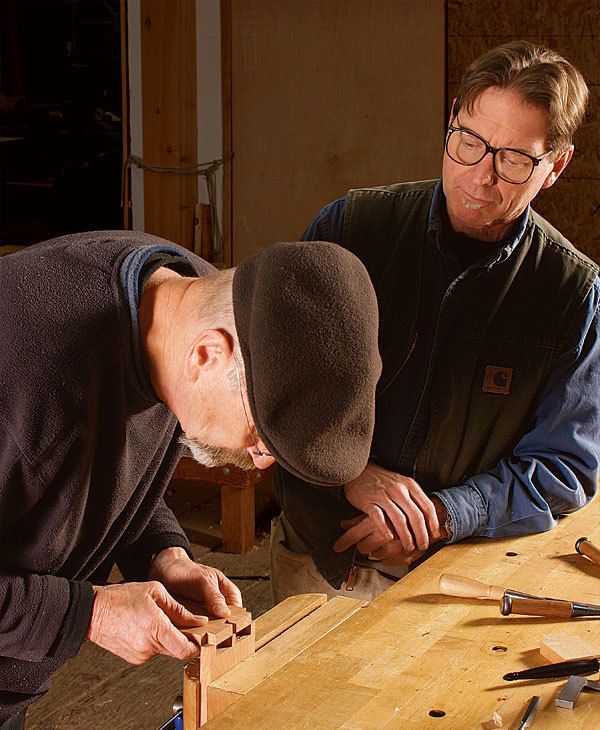A Trip to the Dovetail Doctor
Frustrated reader goes one-on-one with our expert
Synopsis: Frank Rawson had a problem. He’d read all about how to hand-cut dovetails. He’d watched videos. He’d taken a local woodworking class. He’d practiced and practiced. “I still can’t do ’em,” he wrote. So Rawson proposed that Fine Woodworking arrange for a struggling woodworker like him to work with an expert. While the novice woodworker learned, we could capture the details in an article and on video. And that’s what we did. See what happened when Rawson went one-on-one with the dovetail doctor — Gary Rogowski.
From Fine Woodworking #201
Earlier this year, a frustrated woodworker sent us a note that was both challenging and matter-of-fact. His subject was dovetails. “I’ve read most of the stuff Fine Woodworking has published and seen several videos (offering dovetail instruction),” he wrote. “I still can’t do ’em.”
The reader, Tom Rawson of Oakland, Calif., said he had also taken a local woodworking class and practiced dovetails diligently for months afterward. The results? “I tried. I focused. I failed.”
The problem as Rawson sees it is that even the most thorough instruction tends to gloss over the basic mechanics. He proposed an article to address those details, and as a way of getting at them he suggested something we had never tried. What if we arranged for a struggling woodworker like him to have a one-on-one tutorial with an expert? The student could explain his difficulties to the expert, who would teach him the nuances he’d been missing. We’d be there to capture the action in photos and in video.
We arranged for Rawson to spend a couple of days working on through-dovetails with contributing editor Gary Rogowski at Rogowski’s school, the Northwest Woodworking Studio in Portland, Ore. When he arrived in Portland in April, Rawson brought with him a host of frustrations and preconceptions, but a willingness to drop them all in pursuit of better dovetails. Meanwhile, Rogowski worried that he wouldn’t be able to identify any problems or that his student would lack the hand-eye coordination to follow through—that after two days he would have to politely suggest that Rawson outsource all his dovetails or sell his woodworking tools and take up crossword puzzles.
Exam reveals a host of ailments, cures: He needn’t have worried. Almost from the moment Rawson began working, Rogowski began spotting problems, small and large. At every important stage—layout, sawing, chopping away waste, paring and fitting the joint—Rogowski was able to give Rawson critical pointers. Here are the tips that helped the most.
Good dovetails start with good layout— The first step in dovetailing is to scribe a baseline matching the thickness of the stock on the end of both workpieces. Rogowski quickly spotted a problem. Rawson was holding the workpiece against his chest while drawing the marking gauge across the work. Rogowski suggested holding the workpiece flat on the bench instead, allowing him to use his hands more effectively. This resulted in a crisper, deeper line.
For the full article, download the PDF below:
Fine Woodworking Recommended Products

Starrett 4" Double Square

Suizan Japanese Pull Saw

Leigh D4R Pro




















Log in or create an account to post a comment.
Sign up Log in